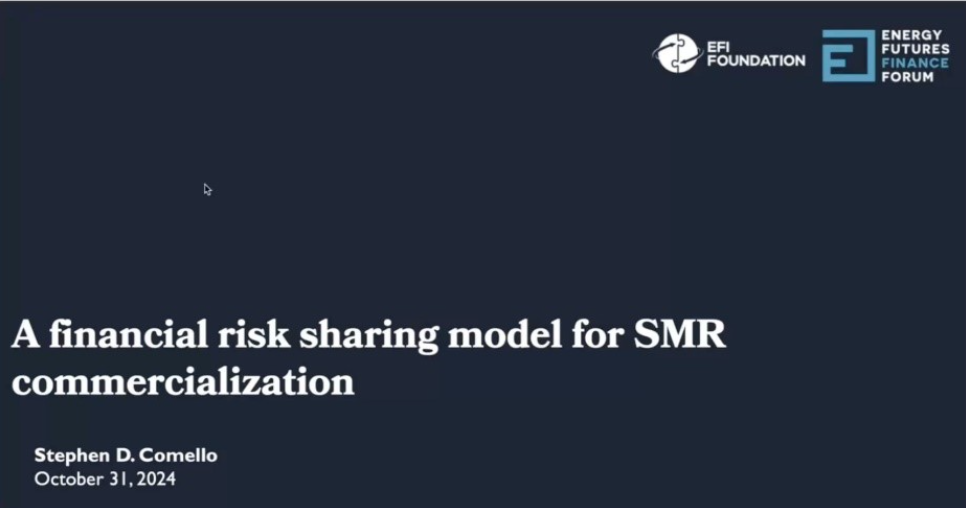
The clean energy transition faces a critical challenge: meeting the rising global energy demand while simultaneously reducing global CO2 emissions and ensuring broad affordability. While both industrialized and developing economies have increased their renewables production over the past decade, the growing need for clean firm power— energy sources with predictable and controllable output —is an increasingly salient issue.
Small modular reactors (SMRs) offer a potential solution to this triple challenge, as highlighted in EFI Foundation’s (EFIF) recent report, Making Small Modular Reactors Bankable Investments. SMRs have shown immense promise for reconciling the competing demands of rising energy requirements and national decarbonization, ensuring capacities ranging from electricity to heating can be delivered while lowering greenhouse gas output.
Larger and more conventional nuclear reactors require considerable setup and infrastructure support to become operational and are oftentimes unfeasible in regions lacking a robust electrical grid. SMRs offer potential savings in both capital cost and construction time, and can be deployed incrementally to meet growing energy demand.
Speaking at the International Atomic Energy Agency (IAEA) Unlocking Capital for Nuclear Energy: Navigating Financial Risks and Opportunities for SMRs webinar on October 31, EFIF Senior Vice President of Strategic Initiatives, Stephen D. Comello, discussed strategies to support the investment and financial support mechanisms needed to deploy SMRs at scale.
While SMRs hold immense potential, Comello emphasized that they are not yet “bankable” investments. “SMRs are still a technology that needs to be commercialized,” he said. “We will eventually get there, but let’s be cognizant of some of the disadvantages we’re facing right now.”
A key challenge is funding first-mover projects, whose successful implementation can provide a model that subsequent SMR deployments follow at a lower cost and shorter development timeframe. During these initial SMR deployments, “you’re testing things out, you’re gaining knowledge… but the issue here is that no one wants to go first,” Comello noted.
To overcome this first-mover disadvantage, he advocated for mechanisms to mitigate uncertainty and higher costs. Comello identified that SMR developers could maximize the learning benefits of first mover projects by focusing on an orderbook where a single design is deployed across multiple builds, likely for multiple customers (e.g., utilities, large industrial loads and hyperscale datacenters). This rolls into a greater approach where both cost risks and development gains are spread across multiple parties, maximizing the learning benefits from initial deployments while diluting the financial risks experienced by any one entity. “The idea here is you have multiple builds of a single kind that is backed by multiple buyers who all stand to gain from either clean heat or clean electrons that SMRs produce,” he said, “you share in the capital required while you gain in the learning effects.”
Buyers who support SMR development don’t need to be restricted to any one industry sector or specialty, and encouraging a diversity of buyers will only augment the learning benefits. However, Comello cautioned against over-clustering buyers during this initial phase, as it might unduly concentrate risk within a particular sector or produce anti-competitive practices.
During the presentation, Comello highlighted the need of targeted public support in de-risking private sector investment during the initial stage of deployment. “If you spent hundreds of millions of dollars up front, it could offset the need for spending billions of dollars in overrun,” he said.
Comello also proposed policymakers consider implementing an insurance mechanism that could cap unexpected cost overruns during the construction phase of the first few builds of an orderbook. This approach would serve as an incentive for private industry to take on these first mover projects, by limiting their exposure to potentially unbounded costs while they gain valuable development knowledge. “You have to be able to cap that risk to get commercial entities interested,” he said.
– Adam Patterson, Communications Associate
(Share this post with others.)




